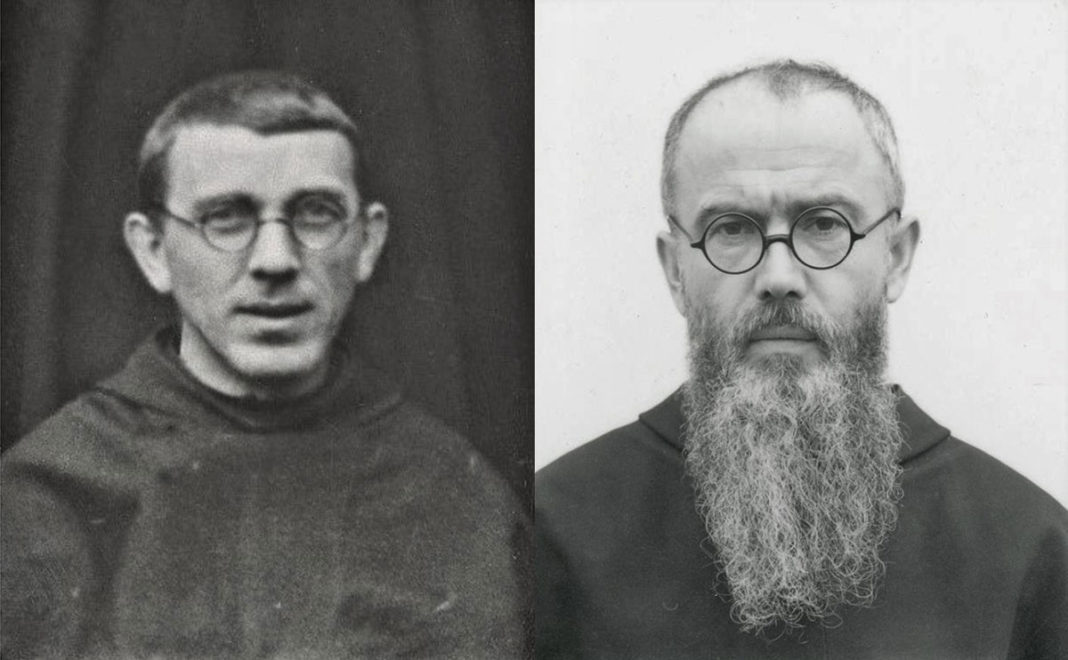January 27, 2021, marks the anniversary of the liberation of the Nazi extermination camp of Auschwitz (January 27, 1945). This date has been established as a “Day of Remembrance” to commemorate the victims of the holocaust during the Second World War.
In Padua, the commemoration will be preceded by a special event on January 21, 2021, when four more “Stolperstein”, will be installed in the city’s streets, adding to those already installed in years past. Three of the new Stolperstein will be dedicated to Ester Giovanna COLOMBO and Guido USIGLI, Jews who were deported and killed in Auschwitz; and Celina TRIESTE, a Jew who was deported and killed in Trieste, Italy, in the Risiera di San Sabba compound. The fourth will be dedicated to our own Friar Placido, who was imprisoned, tortured and killed at the Gestapo headquarters in Trieste (November of 1944).
A Stolperstein (literally a “stumbling block”) is a concrete, cobblestone-sized cube capped with an engraved brass plate measuring 10×10 cm [4 in. x 4 in.]. It is set into the pavement in front of the door of a house where a victim of Nazism lived, or at the spot where he or she was taken prisoner. The person’s name is engraved in the brass along with his date of birth, the date and location of his deportation, when possible, and the date of his death, if known. This information is intended to restore the individuality of the victim whose identity had been deliberately reduced to just a number. In the case of Friar Placido CORTESE, one should note that he was not even assigned a number. He fell into the hands of the Gestapo, the Nazi secret police and was never sent to a concentration camp, where prisoners were registered and actually marked with numbers. The expression “stumbling” must therefore be understood, not in its physical sense, but in its visual and mental sense, as an invitation for passersby to stumble across the work and reflect on it, even if casually.
The expression “stumbling block” comes from the Bible, from Isaiah and the First Letter of Peter. It is also used by St. Paul in his Letter to the Romans (9:33): “Behold, I am laying a stone in Zion that will make people stumble and a rock that will make them fall, and whoever believes in him shall not be put to shame.”
The place chosen for Friar Placido’s Stolperstein is just beyond the churchyard of the Basilica of St. Anthony, at the spot where Friar Placido was taken away to suffer his passion and death. In addition to respecting the historical truth of that event, the location is also significant because it is near a plaque commemorating St. Maximilian M. KOLBE (1894-1941). For some years, that plaque has marked the entrance of a former civic museum, which is now dedicated to St. Maximilian, the martyr of Auschwitz who was canonized by St. John Paul II in 1982.
Now we have a Stolperstein commemorating Friar Placido CORTESE, who with St. Maximilian shared the same ideal of life in the Conventual Franciscan family, as priests and martyrs of charity. Very appropriately, Friar Placido has been called the “Kolbe of Cres, Croatia” and now we can add the “Kolbe of Padua”.
The installation of the Stolperstein for Friar Placido is scheduled for Thursday, January 21 2021, at 11:15 in the morning. Those attending the installation will include city authorities and a representative of the Jewish Community of Padua. The event will be carried out in compliance with anti-Covid regulations.
Friar Giorgio LAGGIONI, Vice-Postulator for the cause of Friar Placido

















